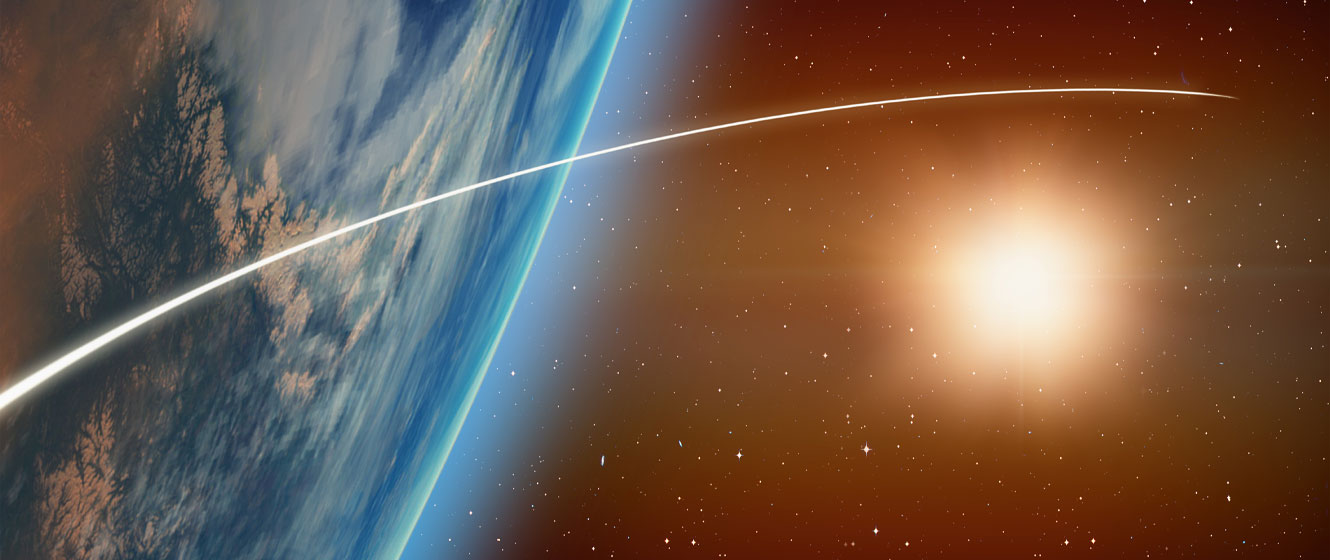
Witnessing a rocket launch is one of the most awe-inspiring sights you can see. Rockets carry incredible payloads, such as flagship missions to Pluto, Jupiter, and other worlds, or carry people into space on historic and thrilling missions. These missions bring us incredible photos, a greater understanding of the cosmos, as well as a sense of excitement and inspiration. You can stand mere miles away from some of the most powerful rockets in existence, and feel the ground shake below you as humanity pushes itself against the force of gravity and off into the heavens.
In 2023, over a hundred rockets were launched from the United States. Many of these rockets were satellite launches, however, others were missions to asteroids, NASA launches to the International Space Station, and maiden flights of new and powerful rockets. 2024 promises to be a much more exciting year, with multiple new rockets coming online, and even more astronaut launches.
The hotspot for rocket launches in the United States is, as it always has been, Cape Canaveral, Florida. Its location right along the coast and close to the equator makes it an ideal spot for launches. There are many locations you can choose to view launches – we’ve taken the time to write up some places you can go to watch. Check out our article on How to View and Photograph a Rocket Launch!
Starlink Flies Again (and Again, and Again)
Technically, this isn’t a single launch, but in terms of volume, the launches of SpaceX’s Starlink satellite constellation offer the highest chance to witness a rocket launch. SpaceX executed nearly 100 missions in 2023, with the majority dedicated to their Starlink satellite constellation. Starlink's objective is to provide global internet connectivity and significant efforts have been made towards achieving this goal. In fact, our livestream of the October 2023 annular solar eclipse was made possible through Starlink!
Starlink is launched using the Falcon 9 rocket, taking flight once every 2-3 days from either Cape Canaveral Space Force Base, Kennedy Space Center, or Vandenberg Air Force Base. The flights follow a southeast trajectory, making them challenging to observe from locations other than California or Florida. The Falcon 9 is a partially reusable launch vehicle and the first stage lands on a barge (or autonomous drone ship) in the Pacific or Atlantic Ocean. You have the opportunity to see the Falcon 9 in port either in Los Angeles or Port Canaveral, next to the Disney cruise liners, almost daily as Falcon 9 boosters continuously arrive for processing.
Image: A Starlink launch from Cape Canaveral, FL. Image Credit: Kyle Denny
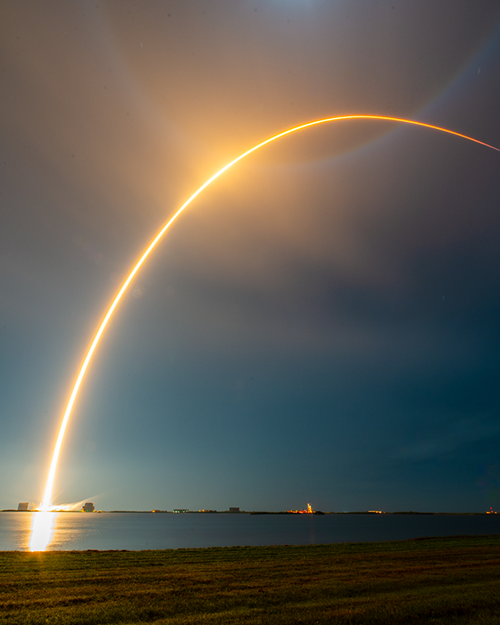
Artemis II – Humanity Returns to the Moon
This launch is without a doubt the most anticipated on this list. The only reason it is not higher as there is a high probability it will be delayed until 2025. However, as of this writing, NASA has not officially announced a new launch date and is tentatively scheduling this mission to launch in December 2024.
Artemis II will be one of the most historic missions so far in the 21st century. NASA is sending four astronauts - Reid Wiseman, Victor Glover, Jeremy Hansen, and Christina Koch - on a 7-day mission to fly the new Orion spacecraft around the Moon. Wiseman, Glover, Hansen, and Koch will become the first humans to visit the Moon since Apollo 17 in 1972. However, it’s important to note that, although they will be technically flying around the Moon, they will not be landing on the Moon. That is the job of the Artemis III mission - scheduled for 2025 (however, that will likely slip as well).
Artemis II will launch from Kennedy Space Center’s Launch Complex-39B on the Space Launch System (SLS) rocket. This is the same rocket and capsule that was demoed in November 2022, and at the time was the most powerful rocket ever launched. They will spend a day in a high-Earth orbit, demonstrating the Orion capsule’s ability to keep astronauts alive and well, before being propelled on a flyaround trajectory to the Moon. The Artemis II crew will come within one lunar diameter of the surface of the Moon, before returning back to Earth at a speed of over Mach 30, and will be recovered by the United States Navy in the Pacific.
With Artemis missions, NASA aims to create a sustainable, long-term presence on the Moon, using innovative technologies to explore more of the Moon than ever before. This will be done through collaboration with commercial and international partners by creating the first long-term base on the Moon. The Artemis program will serve as a stepping stone to eventually sending astronauts to Mars.
Image Credit: NASA/Joel Kowsky
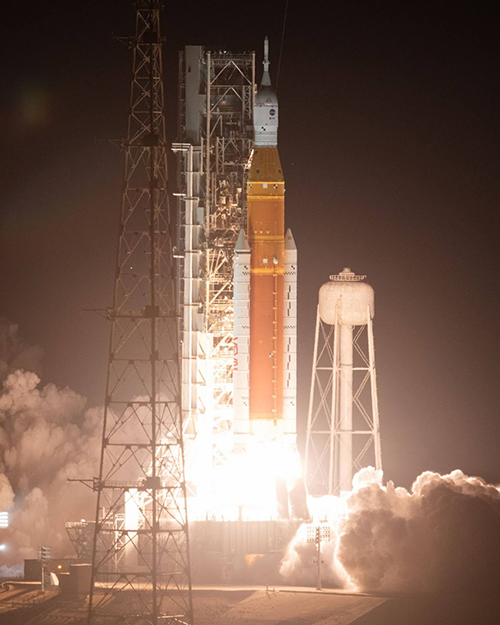
Europa-Clipper – A mission to look beyond the ice
NASA’s flagship interplanetary mission in 2024 will be Europa Clipper. Europa Clipper is designed to investigate Jupiter's moon, Europa, to determine if a habitable world may exist beneath its deep layer of ice. The spacecraft will embark on a multi-year, 1.8 billion-mile journey to Europa, conducting a series of close flybys to scan through the ice and explore the world below.
In many ways, Europa Clipper serves as a follow-up to NASA's Galileo spacecraft and its exploration of Europa. It will perform 50 close flybys of the moon while in orbit around Jupiter. Among the instruments on Europa Clipper is a thermal imaging system, E-THEMIS, providing multi-spectral imaging of Europa. Additionally, the mission will map Europa’s surface with unprecedented detail, achieving resolutions of up to 0.5 meters (or 20 inches). You can get involved with the Europa-Clipper by sending your name to Jupiter in NASA’s “Message in a Bottle” program!
Europa Clipper is scheduled to launch on October 10, 2024, aboard a SpaceX Falcon Heavy rocket from Kennedy Space Center. The mission is fully expendable, meaning there will be no additional landings of the Falcon Heavy side-boosters after launch. If you want to witness the start of a mission heading to the largest planet in the solar system, this is one you should check out!
Image: The SpaceX Falcon Heavy rocket, similar to the one that will launch the Europa-Clipper mission. Image Credit: Kyle Denny
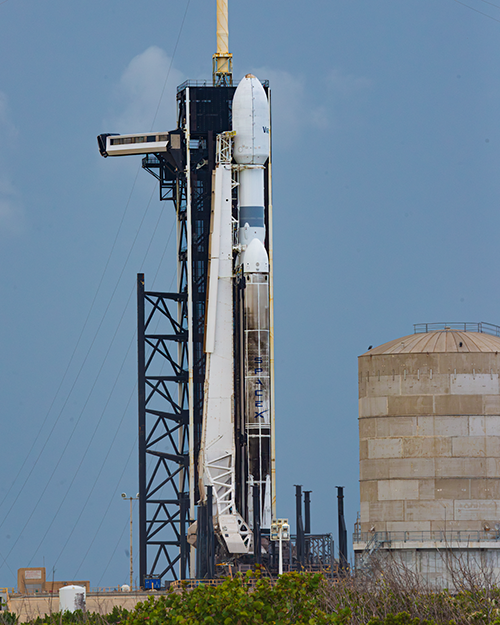
CST-100 Starliner
Currently, in the United States, there is only one spacecraft that is designed to carry crew to the International Space Station - the SpaceX Dragon. Dragon demoed its first crewed flight to the ISS in May 2020. Now Boeing’s Starliner will be joining SpaceX in carrying astronauts to the International Space Station, after several years of delays. Boeing has previously launched uncrewed demonstration flights to the International Space Station, with the first in 2019 failing to complete its primary mission and the second in 2022 actually docking.
Now, the Crew Flight Test is currently scheduled for April 14, 2024, from Space Launch Complex-41. It will launch on the United Launch Alliance Atlas V rocket. Two astronauts, Barry Wilmore and Sunita Williams, will launch on a 6-day mission to the International Space Station. Once this mission is complete, Starliner will be operational and ready to carry astronauts to the ISS in six-month intervals.
Image: The United Launch Alliance Atlas V rocket lifts off - a similar version of this rocket will carry astronauts to the ISS in 2024. Image Credit: Kyle Denny
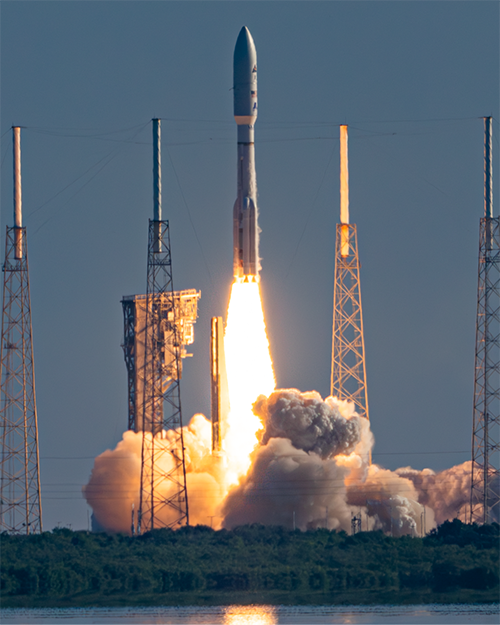
Starship Orbital Flight Tests
While this rocket architecture is still in development, SpaceX plans to continue testing its Starship fully-reusable orbital launch vehicle. Starship flew twice in 2023 - the first time in April, which resulted in the vehicle exploding shortly before stage separation, and then again in November, which nearly made it to orbit around the Earth. When it lifted off, the combined Starship and Super Heavy booster generated over 16 million pounds of thrust - 2x the thrust of the Saturn V, and even more than NASA’s Space Launch System. This was an impressive and thunderous experience for people in South Texas who gathered to witness the launch.
The goal of Starship is to develop a next-generation, fully reusable rocket that can go to Earth orbit, the Moon, and Mars. Specifically, Starship’s stated main goal is to “make life multi-planetary” by sending astronauts to Mars for the purpose of colonization. Starship currently only launches from Boca Chica, Texas, along the Gulf Coast near the border of Mexico. However, SpaceX is planning to build another facility at Kennedy Space Center in Florida, and possibly even elsewhere.
Image: A SpaceX Starship sits on the launch pad ahead of its first launch in April 2023. Image credit: SpaceX
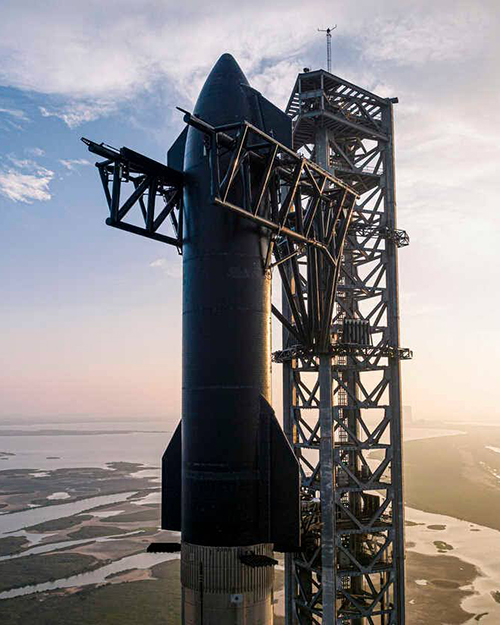
SpaceX is planning to launch multiple missions in 2024 as part of its obligations to NASA’s Artemis Program. While we do not know exactly when these missions will occur, we can assume that its next flight, Integrated Flight Test-3, will launch no earlier than January 2024. Keep an eye out on SpaceX’s website for launch date announcements.

Questions? Learn More!
Interested in learning more about rocket launches and our understanding of space? Check out our articles in the Astronomy Hub!











